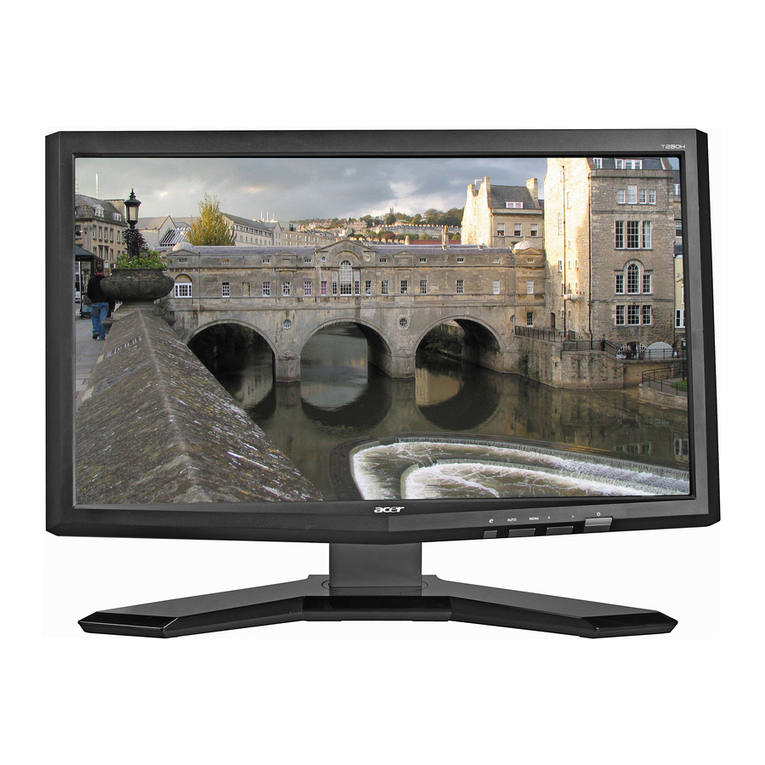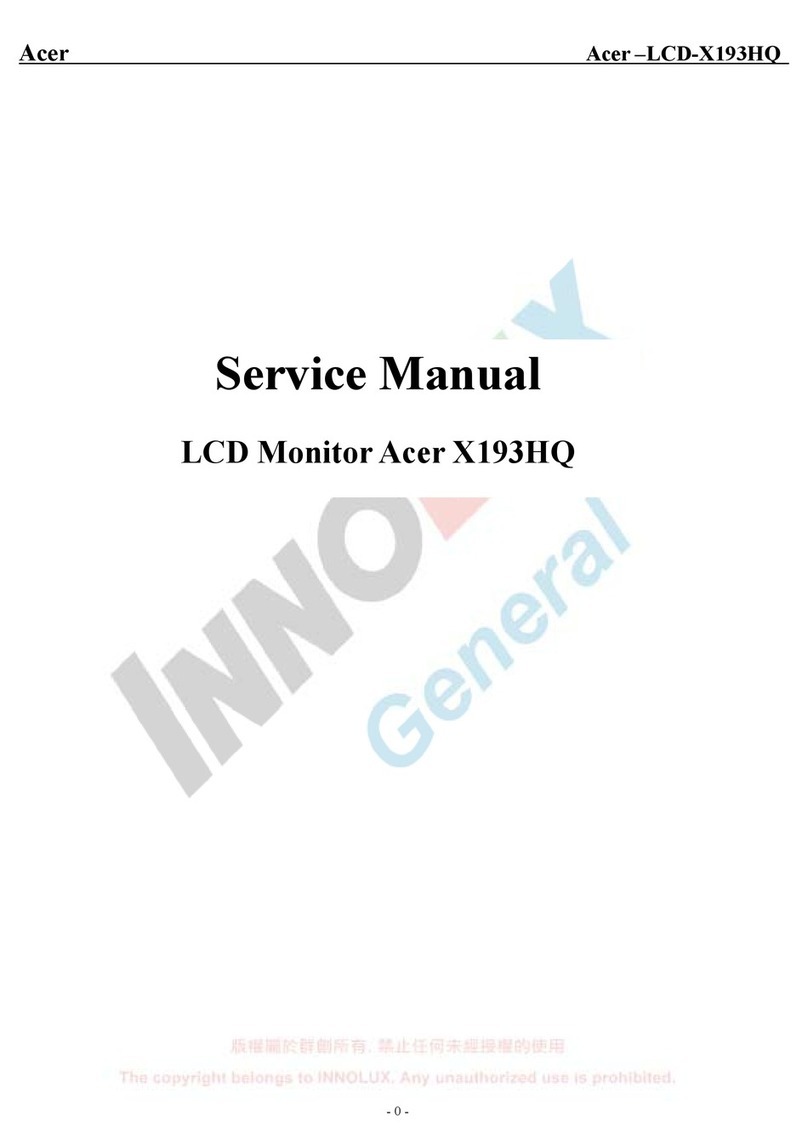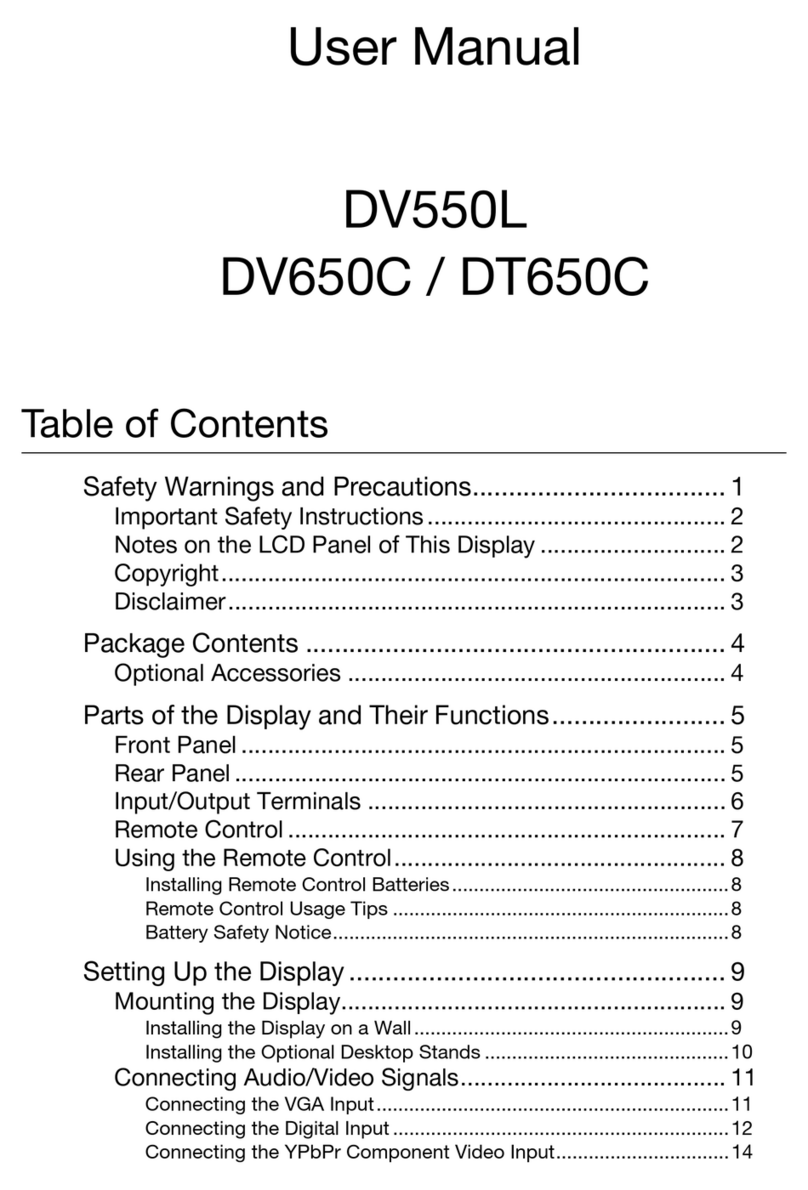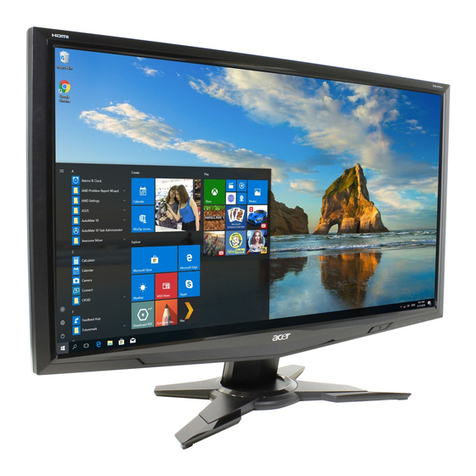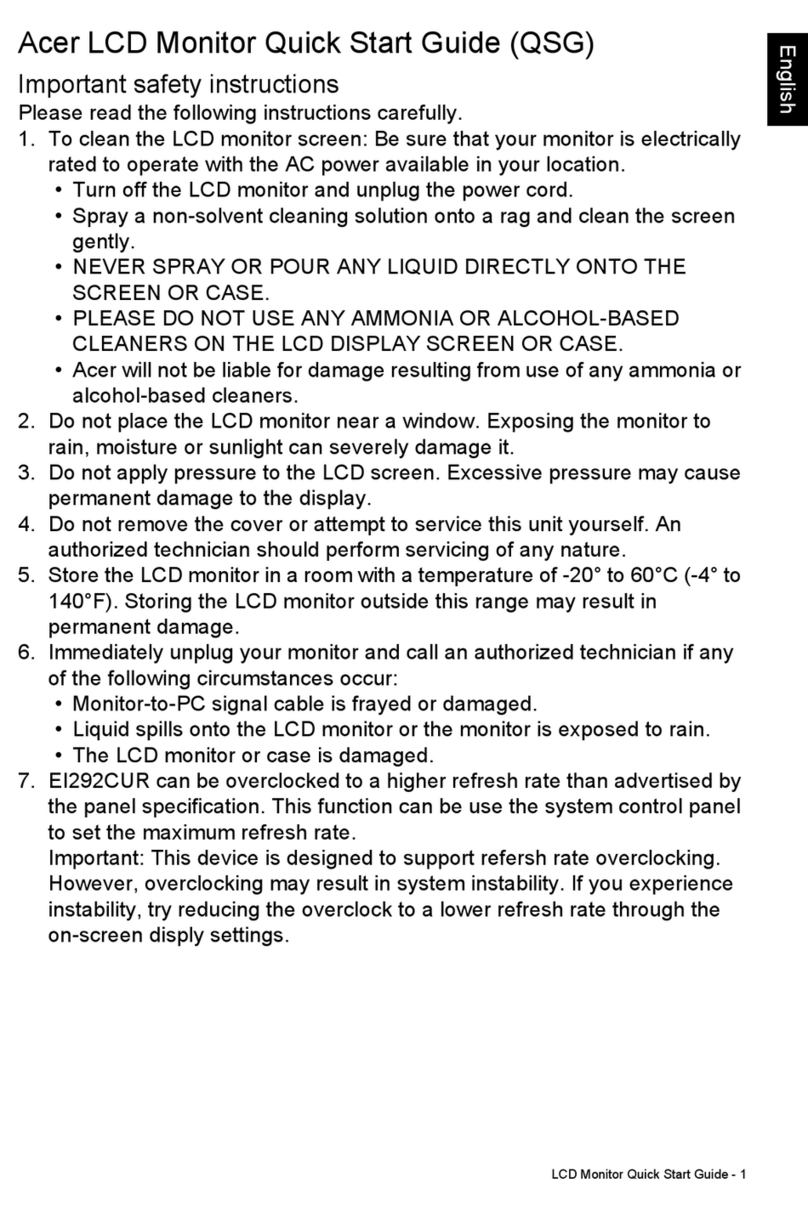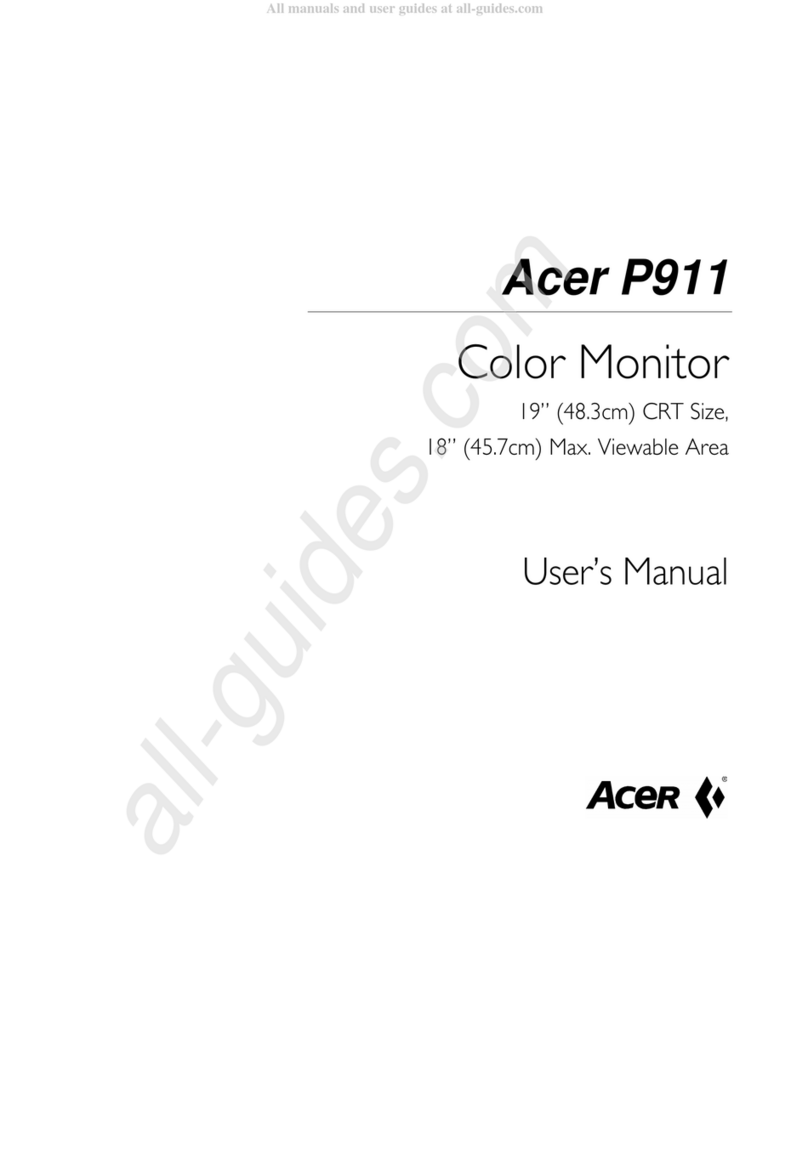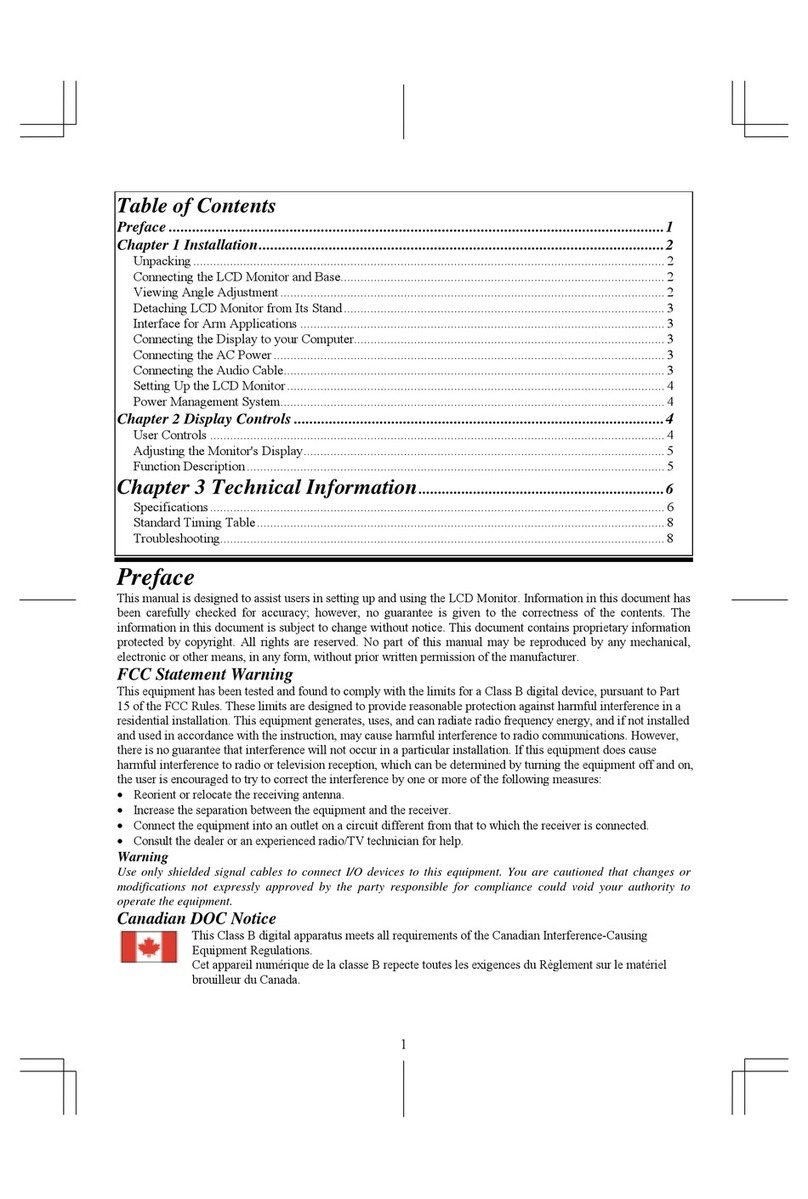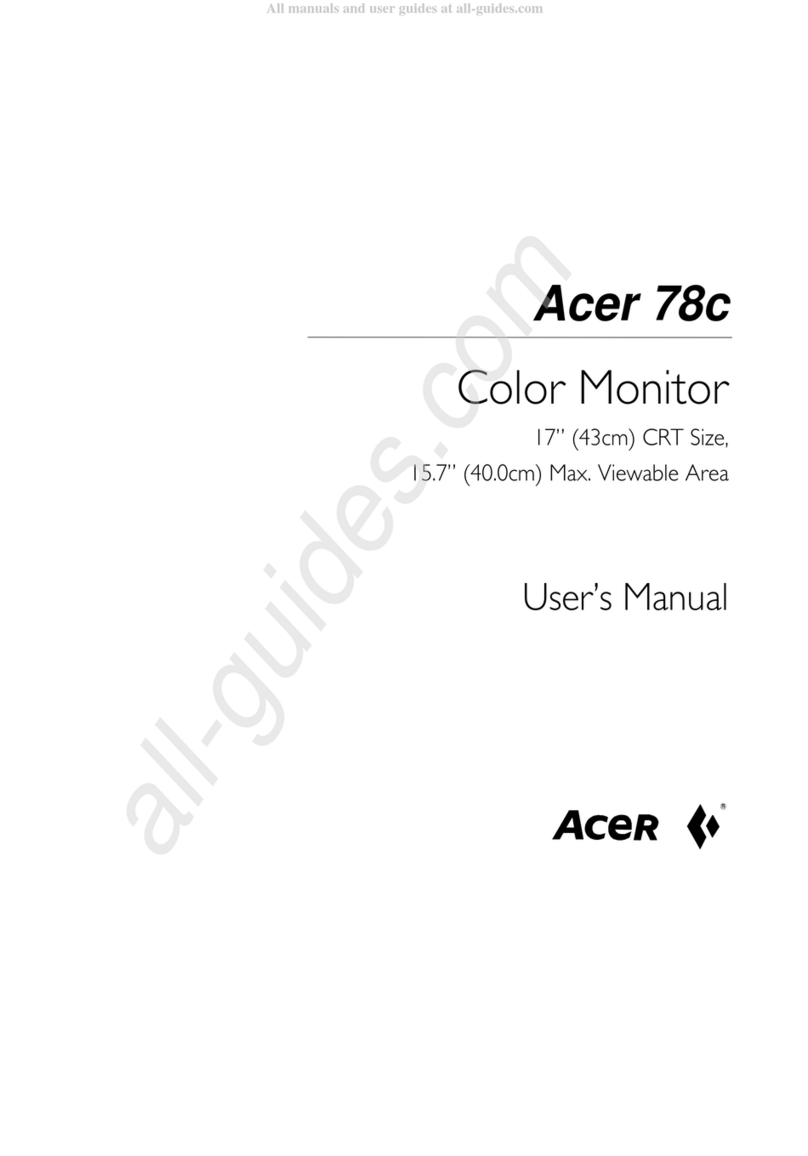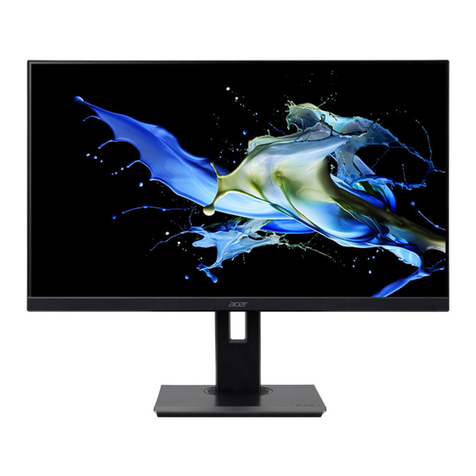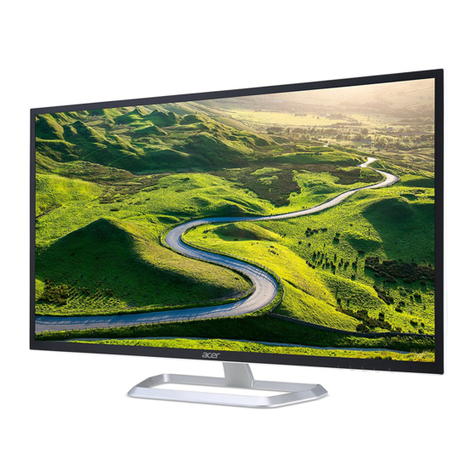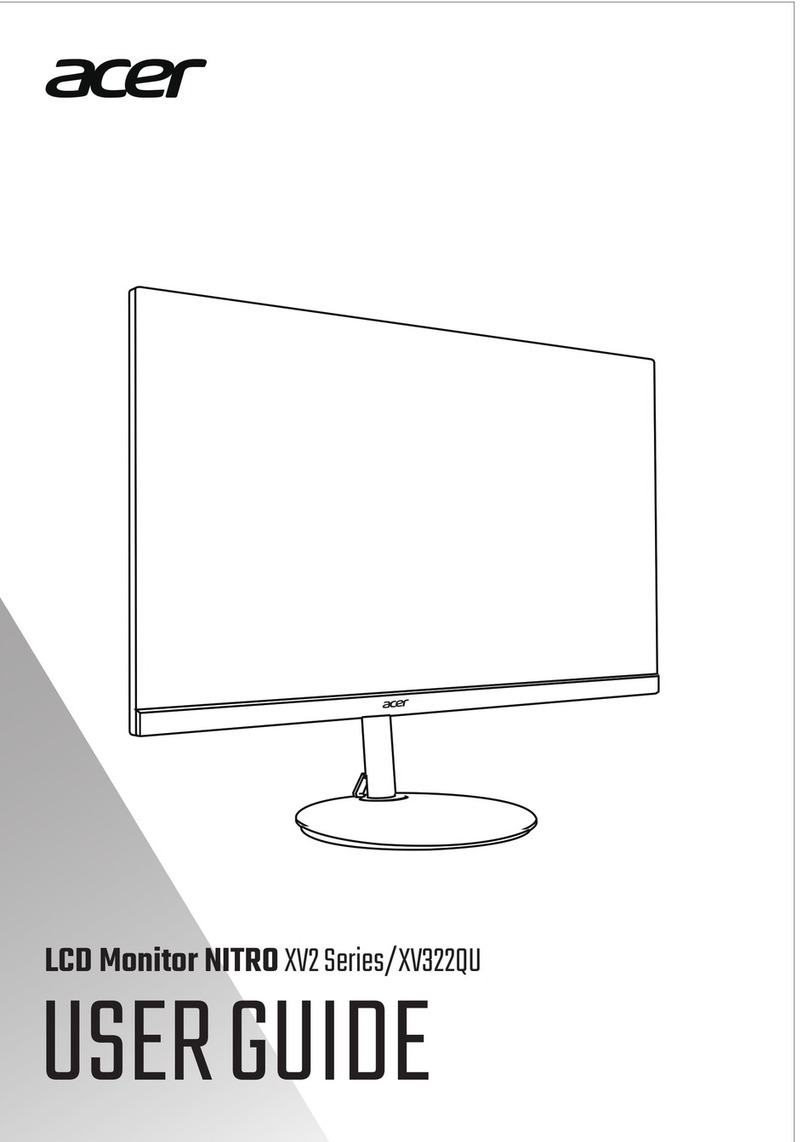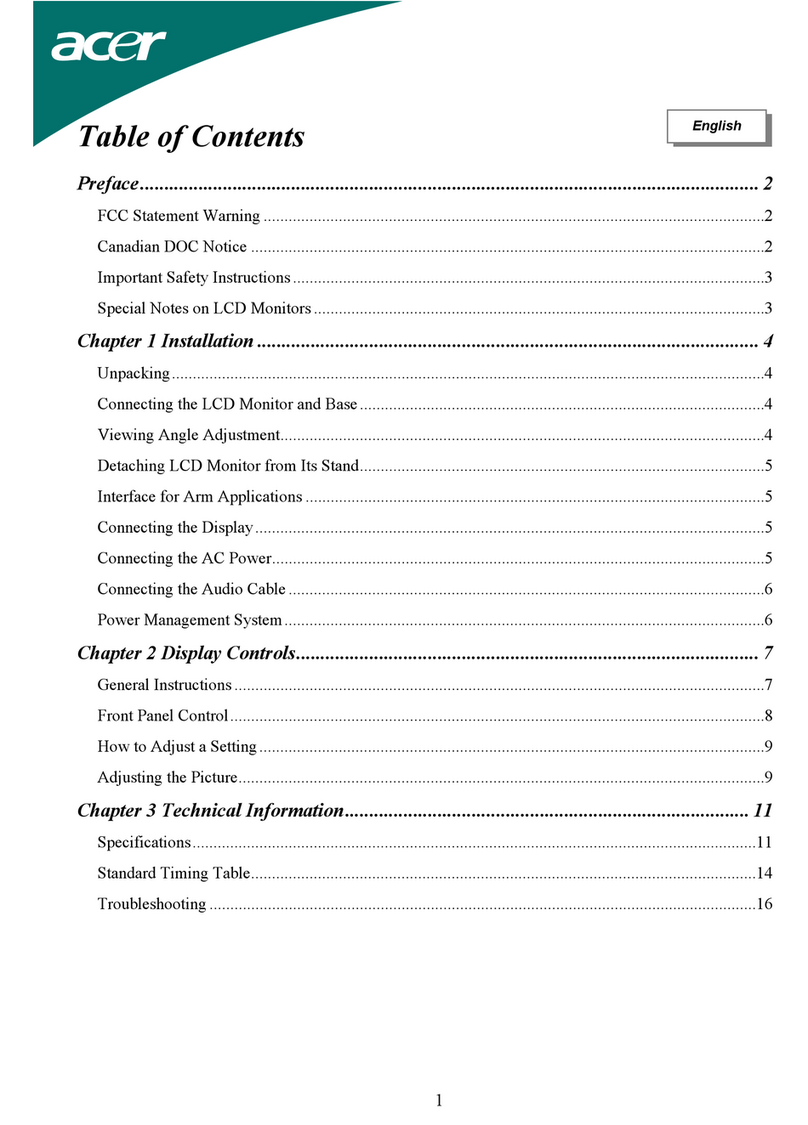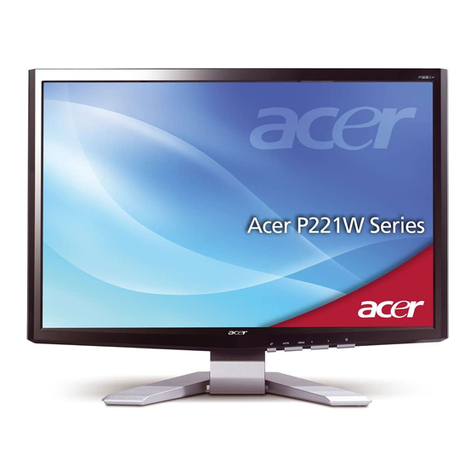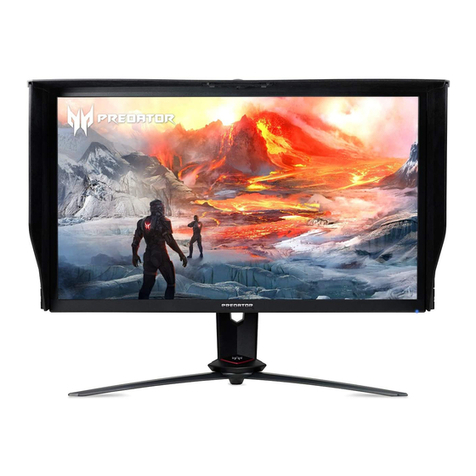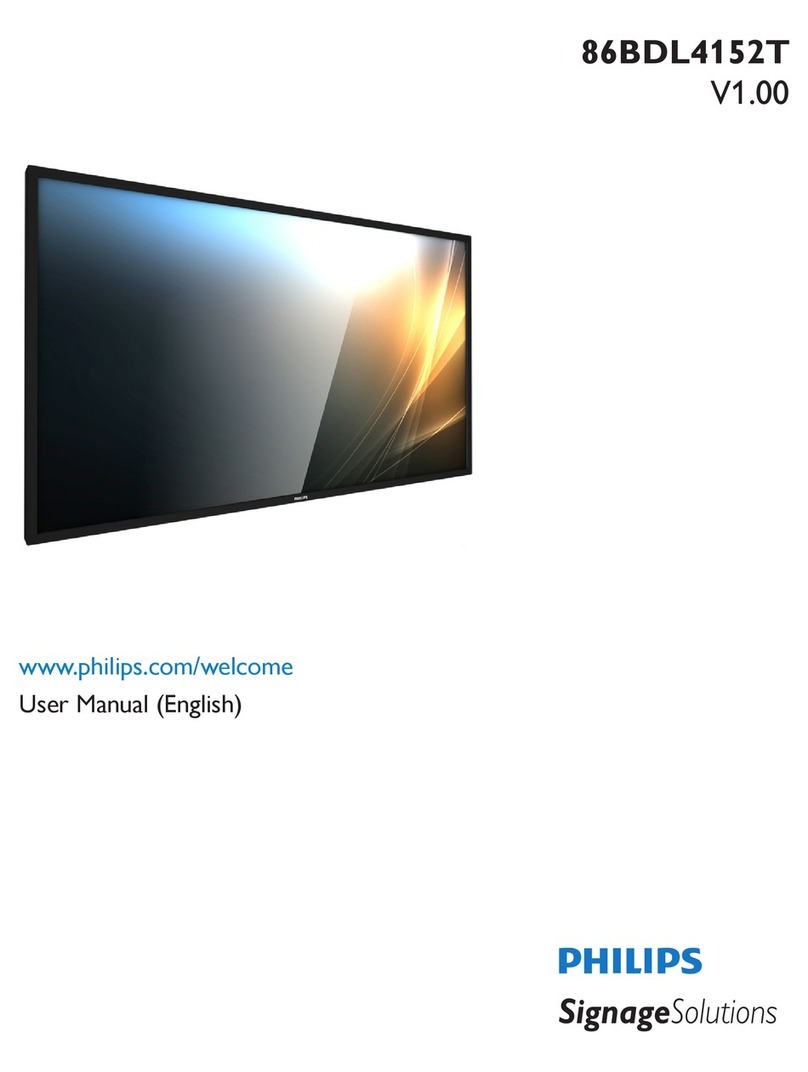1
AL1931(AM939) TFT LCD MONITOR
CONTENTS
1. INTRODUCTION .......................................................................................................................................... 2
1.1 Scope.................................................................................................................................................... 2
1.2 Description............................................................................................................................................ 2
2. ELECTRICAL REQUIREMENTS................................................................................................................. 3
2.1 Standard Test Conditions ..................................................................................................................... 3
2.2 LCD monitor General specification....................................................................................................... 3
2.3 LCD Panel Specification ....................................................................................................................... 4
2.4 Input Signals ....................................................................................................................................... 11
2.5 CONTROLS........................................................................................................................................ 16
2.6 White Color Temperature ................................................................................................................... 20
2.7 POWER SUPPLY ............................................................................................................................... 21
2.8 Plug & Play (EDID) ............................................................................................................................. 23
2.9 Audio Technical specification ............................................................................................................. 24
3. VL-903 DISPLAY CONTROL BOARD...................................................................................................... 25
3.1 Description.......................................................................................................................................... 25
3.2 Features.............................................................................................................................................. 25
3.3 BLOCK DIAGRAM.............................................................................................................................. 26
3.4 Connector Locations........................................................................................................................... 27
3.5 Connector Type .................................................................................................................................. 27
3.6 Connector pin assignment.................................................................................................................. 28
4. VK-903 Function Control key Board....................................................................................................... 31
4.1 Description.......................................................................................................................................... 31
4.2 Connector and Switch Locations ........................................................................................................ 31
4.3 Connector type ................................................................................................................................... 31
4.4 Connector pin Assignment.................................................................................................................. 31
4.5 Switch definition.................................................................................................................................. 32
4.6 LED definition...................................................................................................................................... 32
5. TROUBLESHOOTING............................................................................................................................... 33
5.1 Main Procedure .................................................................................................................................. 33
6. MECHANICAL REQUIREMENTS ............................................................................................................. 38
6.1 Vibration and Shock............................................................................................................................ 38
6.2 Package Drop Specification ............................................................................................................... 38
6.3 Dimension Size and Weight................................................................................................................ 39
6.4 Gap Spec. ........................................................................................................................................... 39
6.5 Tilt Base Rotation ............................................................................................................................... 41
6.6 Plastic Material.................................................................................................................................... 41
6.7 GAP Spec. .......................................................................................................................................... 41
7. Power Line Transient Test (IEC 61000-4-4 Fast Transients/Burst) ..................................................... 41
7.1 Peak Voltage:...................................................................................................................................... 41
7.2 Polarity : + / -................................................................................................................................42
7.3 Repetition Frequency of the impulse : 5 KHz. .................................................................................... 42
7.4 Rise-Time : 5ns
±
30% ..................................................................................................................... 42
7.5 Impulse Duration: 50 nS
±
30% .......................................................................................................... 42
7.6 Relation to Power Supply: Asynchronous .......................................................................................... 42
7.7 Burst Duration: 15 ms
±
20%.............................................................................................................. 42
7.8 Burst Period: 300 ms
±
20% ............................................................................................................... 42
7.9 Climatic Conditions: ............................................................................................................................ 42
7.10 Test Procedure: .................................................................................................................................. 42
8. Power Line Surge Test (IEC 61000-4-5 Surge) ...................................................................................... 44
8.1 Climatic Condition............................................................................................................................... 44
8.2 Test Conditions:.................................................................................................................................. 44
8.7 Display set high-resolution mode, AC input use AC 240V. ................................................................ 44
